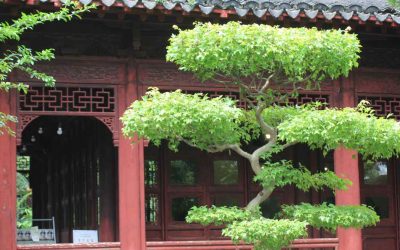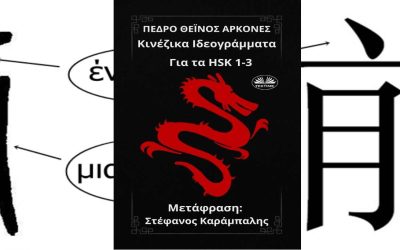A Giant Mandala in the Heart of Tibet
The Palkor of Gyantze is one of Tibet’s great marvels and a unique jewel of universal architecture and art. Its shape, scale, and iconography defy comparison with any other construction.
Amidst some of the highest mountains of central Tibet, on the ancient trade route linking Lhasa with India, lies the small town of Gyantze. There stands one of the most singular and dazzling monuments of the Buddhist world: the Palkor Chöde. With a silhouette that astonishes from the very first glance, the Palkor is neither palace nor fortress, neither monastery nor temple, but rather a kind of three-dimensional architectural mandala: a kumbum.
- An Architectural Form Without Parallel
While most Tibetan temples follow horizontal layouts inspired by Indian or Chinese models, the Palkor rises like a stepped pyramid of multiple levels, each containing rows of chapels. This structure follows a symbolic design, representing a universe through which the pilgrim ascends toward enlightenment. The term kumbum literally means “one hundred thousand images,” and in the case of the Palkor, the name is no exaggeration.
- An Artistic Treasure Without Equal
The interior of the kumbum contains 108 chapels distributed across six concentric levels. Each one is adorned with frescoes, statues, and mandalas that, on their own, could justify the existence of an entire religious center. In fact, anywhere else in the world, a single one of these chapels would be enough to attract pilgrims, scholars, and art lovers alike. The mural paintings that cover its walls—rendered in the Nepali-Tibetan style of the 15th century—still preserve a vividness of color and detail that has withstood centuries of weather, war, and neglect. Many of these images offer a compendium of cosmology, medicine, tantric ritual, and visions of the afterlife.
- History of Its Construction
The Palkor was built between the late 14th and mid-15th centuries under the patronage of the prince of Gyantze, Rabten Kunzang Phak, during a period of relative political stability and cultural openness in Tibet. It was a time when multiple Buddhist schools coexisted, and the monastery annexed to the kumbum was home to at least three traditions: Gelug, Sakya, and Kagyu. This coexistence explains the rich iconographic and doctrinal diversity found within, making the Palkor a living testament to a plural and dynamic Tibet.
- Symbolism in the Tibetan World
The Palkor is not merely a temple: it is an architectural mandala to be walked through, a physical visualization of the path to enlightenment. Ascending its levels is like progressing through the stages of tantra—from the outer circles of protection to the central deities who embody emptiness and compassion. Each chapel serves as a gateway to a specific teaching, and the whole structure forms a miniature cosmos. Its design, layout, and ritual function make it a monument of profound symbolic depth.
Visiting the Palkor Today
Despite the ravages of time and the iconoclastic campaigns of the 20th century, the Palkor still stands—lofty and magnificent, a reliquary of wisdom and beauty. Climbing its levels, pausing in its chapels, and attempting to uncover its mandalic meaning is a transformative experience. For those who observe it with care, the Palkor is not merely a monument—it is a silent teaching, a vertical pilgrimage to the heart of Tibetan Buddhism.
The mandalic structure of the Palkor recalls, in both function and symbolism, the great monument of Borobudur in Indonesia. Both can be read as three-dimensional mandalas, designed for the pilgrim to physically experience the transformations that masters achieve on the psychological plane.
About me: I have spent 30 years in China, much of the time traveling and studying this country’s culture. My most popular research focuses on Chinese characters (Chinese Characters: An Easy Learning Method Based on Their Etymology and Evolution), Matriarchy in China (there is a book with this title), and minority cultures (The Naxi of Southwest China). In my travels, I have specialized in Yunnan, Tibet, the Silk Road, and other lesser-known places. Feel free to write to me if you’re planning a trip to China. The agency I collaborate with offers excellent service at an unbeatable price. You’ll find my email below.
Last posts
The Primitivist: The Taoist Philosopher of Simplicity
The Primitivist: The Taoist Philosopher of Simplicity The Taoist classic Zhuangzi is not the work of a single philosopherAnyone who takes a closer look at the foundational works of Taoism will quickly discover that the book known as Zhuangzi was not entirely written...
Zhang Yongzheng, the master of deluding reality
Zhang Yongzheng, the master of deluding reality Reality is an illusion, say Buddhist texts. And each of Zhang Yonggzheng's (Gansu, 1978) works plays with this concept to remind us again and again that there is no immutable reality but a fluid universe of forms that...
The book Hanzi for HSK 1-3 now available in Greek language
The book “Hanzi for HSK 1-3” now available in Greek language This April, the translation of my book Hanzi for HSK 1-3 has been published in the main digital bookstores in Greece. The Greek version of this book, from the pen of Stefanos Karampalis, has been one of...
Portrait of a Mandarin in 1800
Portrait of a Mandarin in 1800 This was the year in which a very interesting book was published, which through 60 portraits, tried to show some aspects of life in China to the western public. A book now in the public domain, from which we adapted "A Mandarin of...
The art of laying out gardens among the Chinese
The art of laying out gardens among the Chinese In the 1740s, William Chambers travelled on three trading voyages to China with the Swedish East India Company. He was the first European to study Chinese architecture methodically. In a book published in 1757, Designs...
The secret treasure of ancient Chinese art
The secret treasure of ancient Chinese art China has a fabulous artistic treasure hidden from the eyes of the public and specialists. It is her best kept treasure, because given the dispersion of its location, the difficulty of conservation and even evaluation and...










